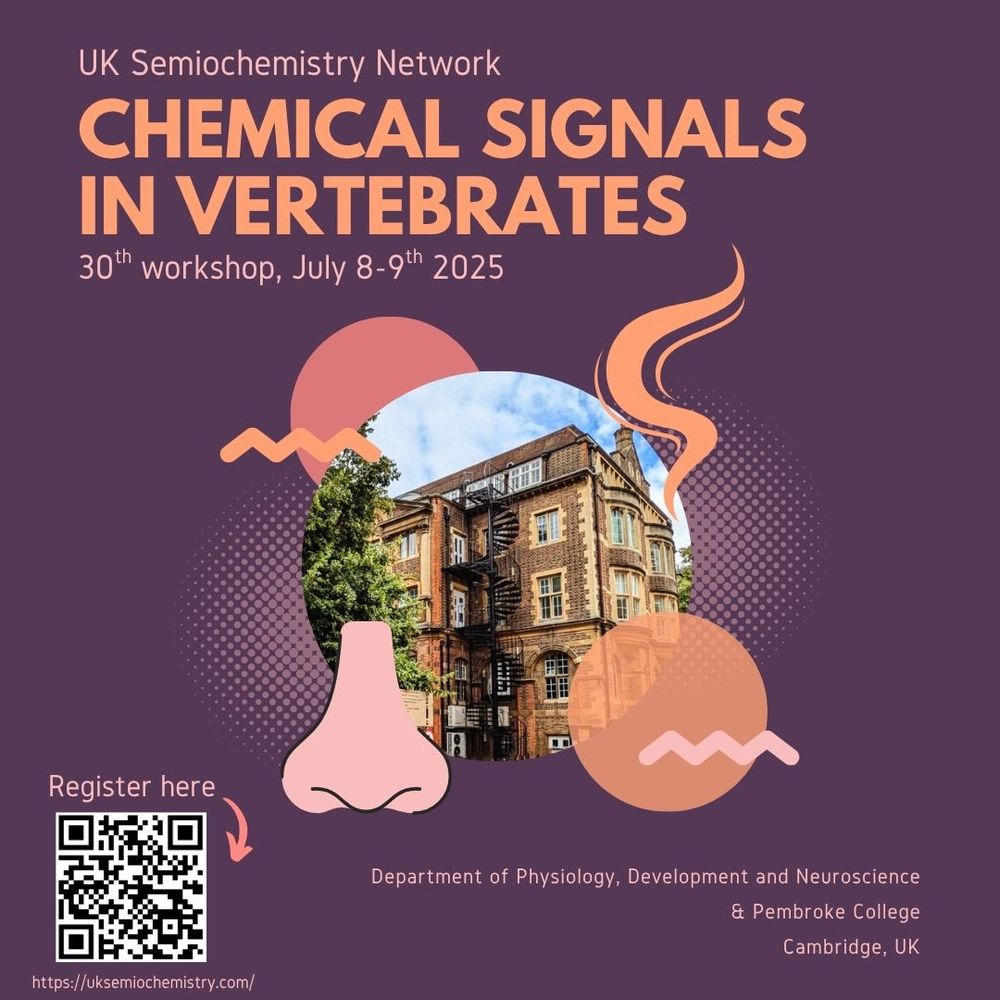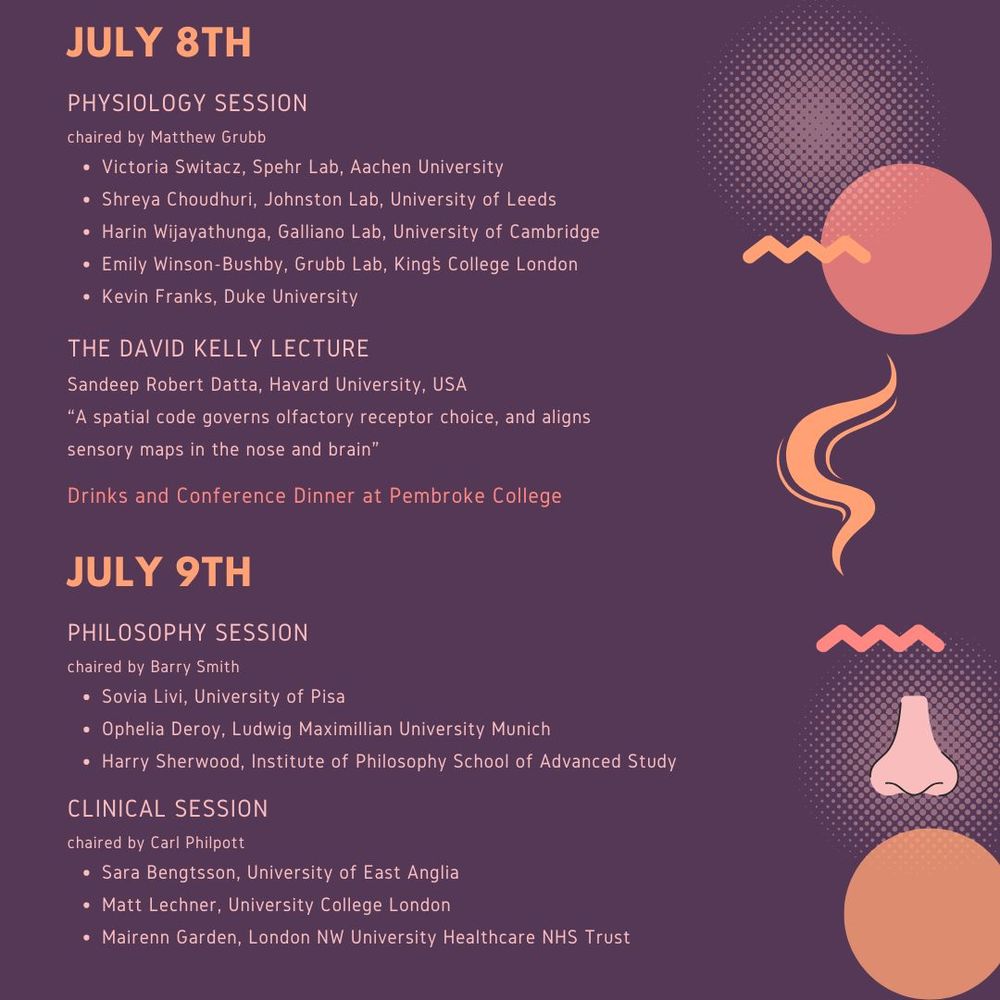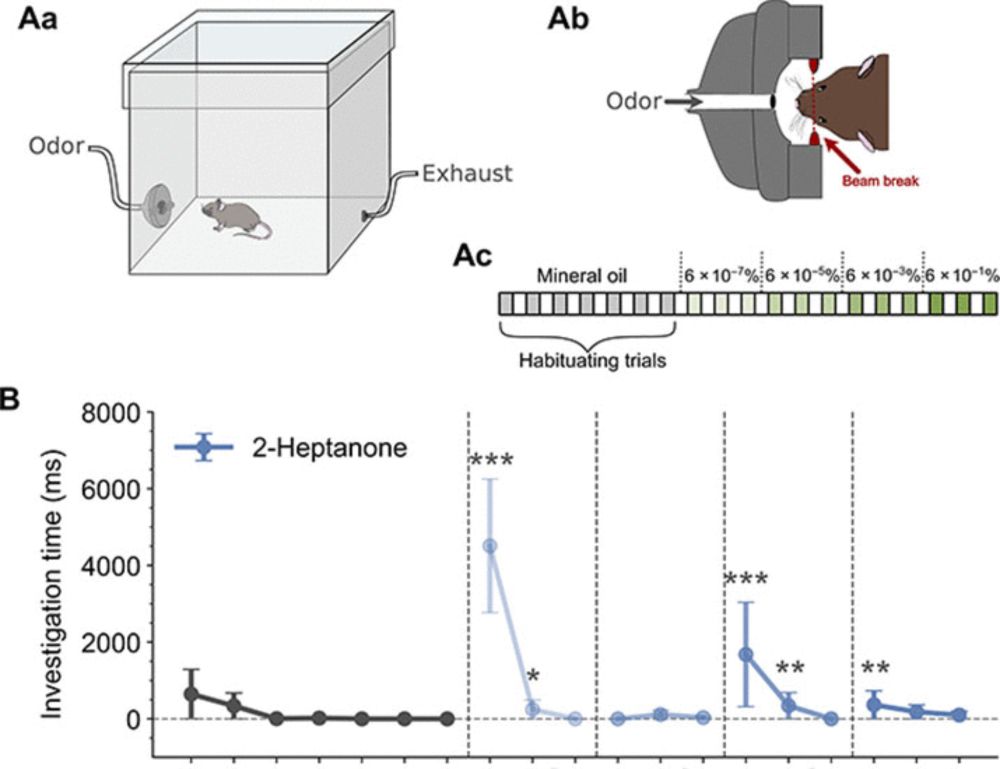Johnston Lab
@inchinn.bsky.social
140 followers
150 following
10 posts
Neuroscientist fascinated by sensory physiology and how internal state modulates neural circuits
https://johnstonlab.org/
Posts
Media
Videos
Starter Packs
Johnston Lab
@inchinn.bsky.social
· Jul 9
Reposted by Johnston Lab
Reposted by Johnston Lab
Tobias Ackels
@tobiasackels.bsky.social
· May 18
Reposted by Johnston Lab
Reposted by Johnston Lab
Joseph D. Zak
@josephdzak.bsky.social
· Apr 30
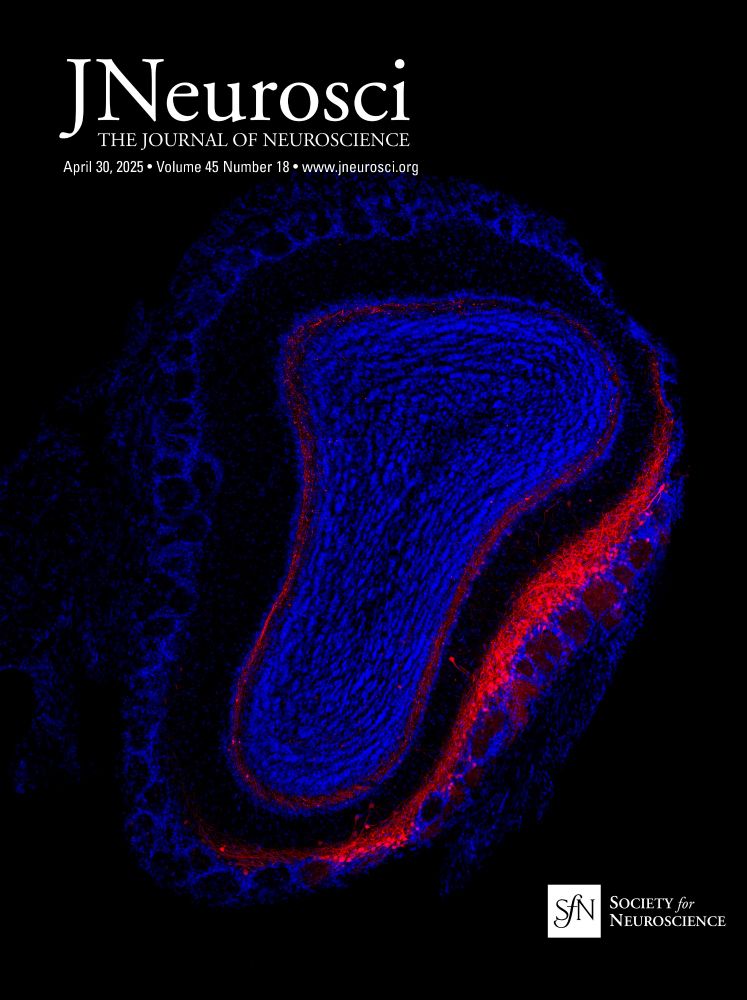
Amplification of Olfactory Transduction Currents Implements Sparse Stimulus Encoding
Sensory systems must perform the dual and opposing tasks of being sensitive to weak stimuli while also maintaining information content in dense and variable sensory landscapes. This occurs in the olfa...
www.jneurosci.org
Johnston Lab
@inchinn.bsky.social
· Apr 25
Reposted by Johnston Lab
Thomas Bozza
@neuroboz.bsky.social
· Mar 6
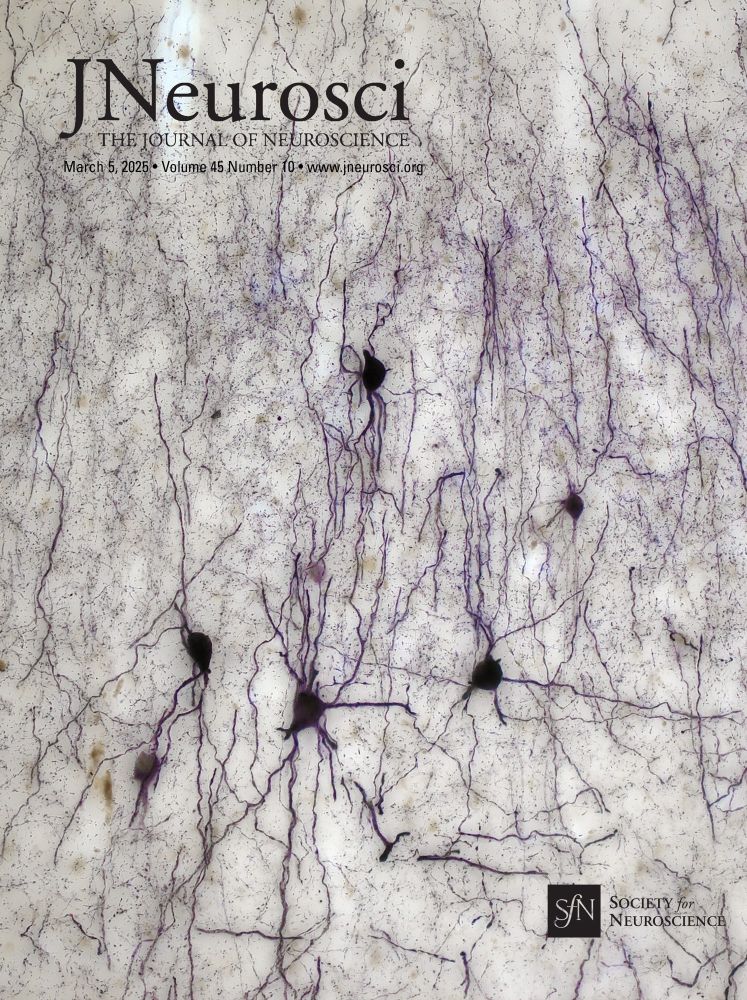
Recalibrating Olfactory Neuroscience to the Range of Naturally Occurring Odor Concentrations
Sensory systems enable organisms to detect and respond to environmental signals relevant for their survival and reproduction. A crucial aspect of any sensory signal is its intensity; understanding how...
www.jneurosci.org
Reposted by Johnston Lab
Dinu F Albeanu
@dinanthos.bsky.social
· Feb 26

Axially decoupled photo-stimulation and two photon readout (ADePT) for mapping functional connectivity of neural circuits
All optical physiology in vivo provides a conduit for investigating the function of neural circuits in 3-D. Here, we report a new strategy for flexible, axially-decoupled photo-stimulation and two pho...
doi.org
Reposted by Johnston Lab
Catherine Dulac
@dulaclab.bsky.social
· Feb 26
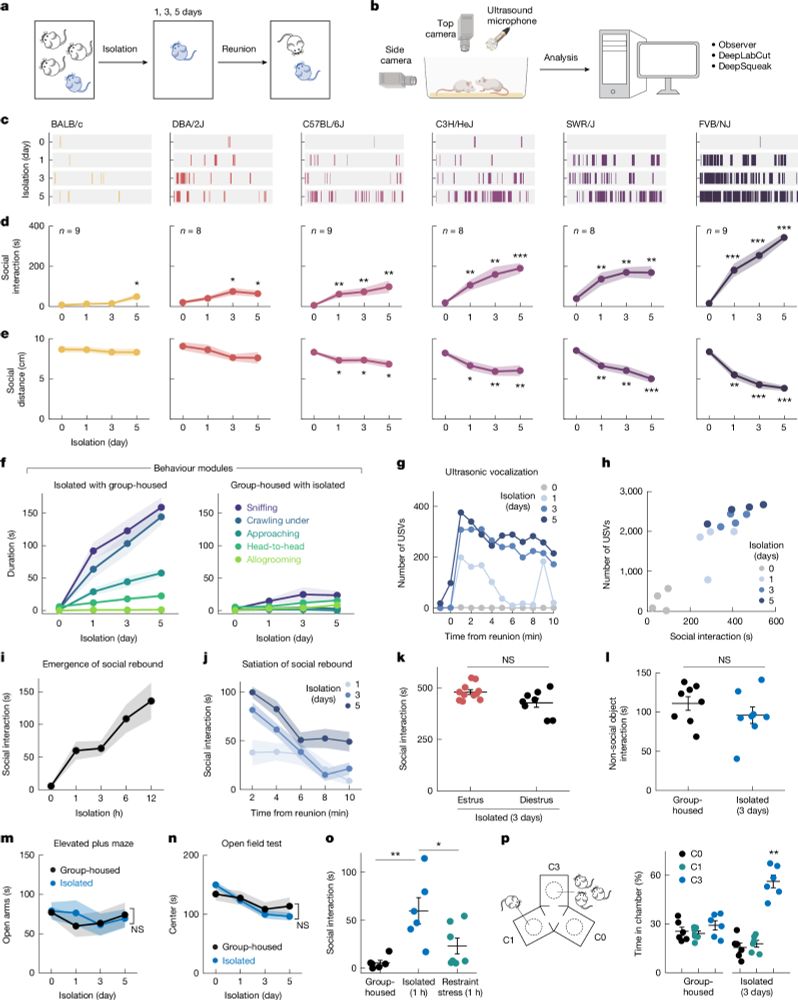
A hypothalamic circuit underlying the dynamic control of social homeostasis
Nature - New data on brain-wide circuits centred around two interconnected hypothalamic neuron populations provide significant mechanistic insights into the emergence of social need during social...
rdcu.be
Reposted by Johnston Lab
Bob Pellegrino
@kingfunk.bsky.social
· Jan 26
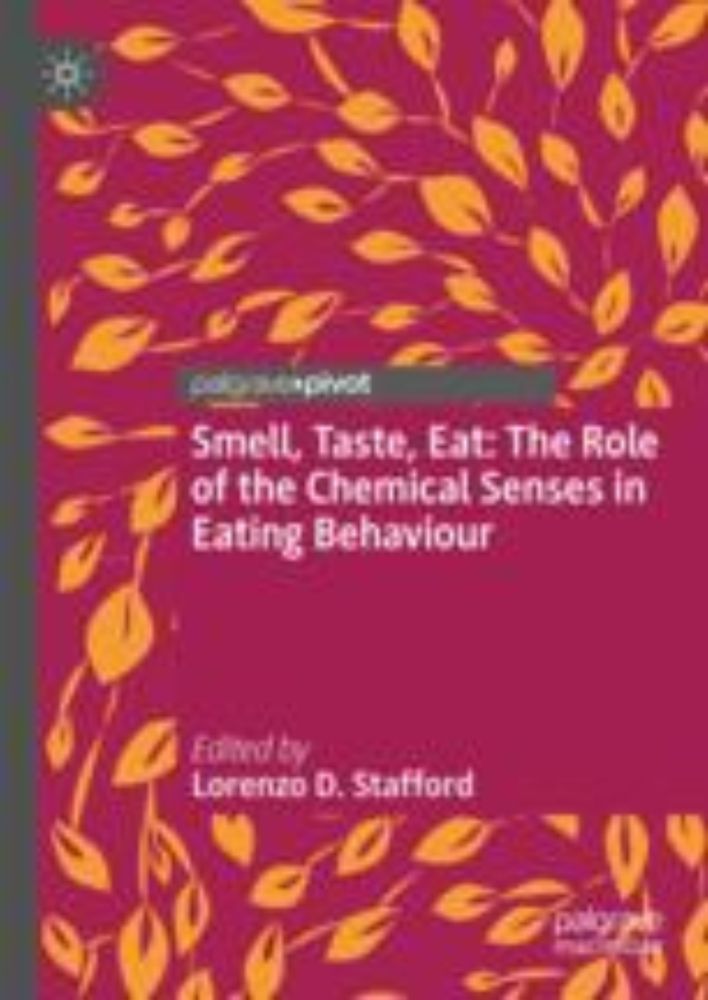
The Effect of Olfactory Disorder (and Other Chemosensory Disorders) on Perception, Acceptance, and Consumption of Food
People with changes in the overall sensory experience of food often complain of taste disturbances, although the problem is normally caused by the loss of aroma in the food (thus an olfactory disorder...
link.springer.com
Reposted by Johnston Lab
Reposted by Johnston Lab
Tim Behrens
@behrenstimb.bsky.social
· Nov 30

How the Web of Science takes a step back
<p>The Web of Science, a major commercial indexing service of scientific journals operated by Clarivate, recently decided to remove eLife from its Science Citation Index Expanded (SCIE). eLife will on...
www.coalition-s.org
Reposted by Johnston Lab
Reposted by Johnston Lab


